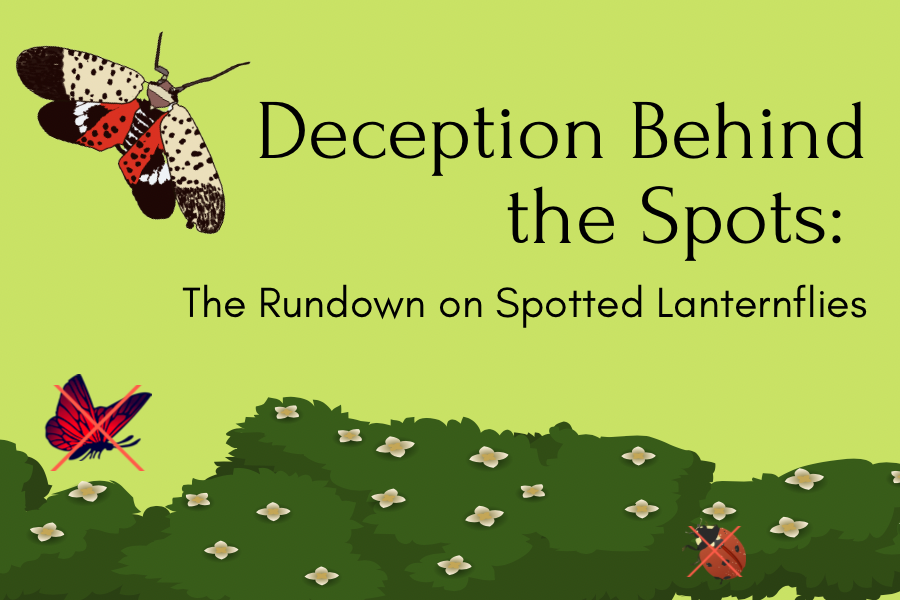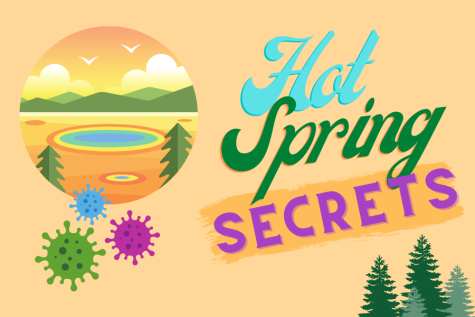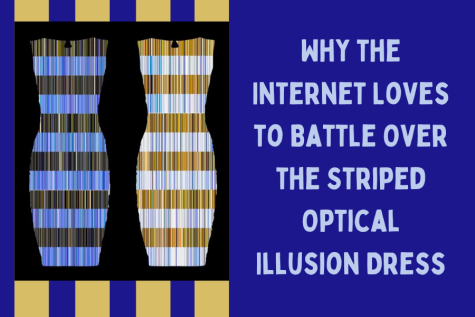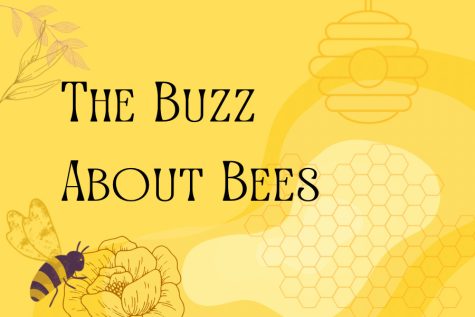Deception Behind the Spots: The Rundown on Spotted Lanternflies
The spotted lanternfly has brightly-colored red, white, and brown wings, adorned with an innocent smattering of polka dots. If you see one, you are likely to mistake it for a ladybug or beetle. But even though they might seem harmless, spotted lanternflies are a true danger to our environment.
Spotted lanternflies can cause a lot of harm to a variety of different plants: grapevines, maple trees, black walnut trees, and many other species are fed on by these ravenous insects. When lanternflies eat from these plants, they produce honeydew, which creates a mold on plants that hinders their photosynthesis and therefore, their ability to synthesize glucose. This destruction caused to plants has a major effect on the environment and production.
These lanternflies are especially harmful because they are an invasive species. They are thought to have come from China and were first seen in the US in Pennsylvania. Often, when an invasive species finds a new environment it does not belong in, there are no predators to stop it from reproducing, and its population will skyrocket. The many insects produced in this case can easily damage the ecosystem around them.
In Pennsylvania, the spotted lanternfly is numerous and impactful. It is estimated that spotted lanternflies cost Pennsylvania hundreds of million dollars every year through poisoning plants that produce a lot for its economy. The most harm is caused during summer, as spotted lanternflies recreate and feed more then.
Some spotted lanternflies have recently made their way into Scarsdale. Because of their dangerous nature, this has raised some red flags throughout the community, with some worried for the future of their lawns and gardens. If seen, these should be killed on the spot to prevent further damage. Any step that someone could take matters in the fight against spotted lanternflies, including killing just one bug. Since these creatures cause so much harm to the environment, they need to be eliminated. If these are removed from Scarsdale, a ton of harm to the environment could be avoided!
Works Cited
“Are Spotted Lanternflies Poisonous?” Organic Lesson, 20 Feb. 2021, www.organiclesson.com/are-spotted-lanternflies-poisonous/. Accessed 5 Feb. 2022.
Lewis, Penny. “Tree of Heaven: An Exotic Invasive Plant Fact Sheet.” ELA, 15 May 2014, www.ecolandscaping.org/05/landscape-challenges/invasive-plants/tree-of-heaven-an-exotic-invasive-plant-fact-sheet/. Accessed 5 Feb. 2022.
“New York State Integrated Pest Management.” Cornell Cals, 2022, nysipm.cornell.edu/environment/invasive-species-exotic-pests/spotted-lanternfly/. Accessed 5 Feb. 2022.
Osterloff, Emily. “What’s so bad about the spotted lanternfly?” Natural History Museum, 15 Oct. 2021, www.nhm.ac.uk/discover/whats-so-bad-about-the-spotted-lanternfly.html. Accessed 5 Feb. 2022.
“Spotted Lanternfly.” Chesapeake Bay Program, www.chesapeakebay.net/discover/field-guide/entry/spotted_lanternfly. Accessed 5 Feb. 2022.
“Spotted Lanternfly.” Department of Agriculture, www.nj.gov/agriculture/divisions/pi/prog/pests-diseases/spotted-lanternfly/about/. Accessed 5 Feb. 2022.
“Spotted Lanternfly.” Penn State Extension, extension.psu.edu/spotted-lanternfly. Accessed 5 Feb. 2022.
“Spotted Lanternfly Alert.” Pennsylvania Department of Agriculture, www.agriculture.pa.gov/Plants_Land_Water/PlantIndustry/Entomology/spotted_lanternfly/SpottedLanternflyAlert/Pages/default.aspx. Accessed 5 Feb. 2022.
Weber, Melissa. “Why are Invasive Species Dangerous to the Environment?” eco redux, www.ecoredux.com/invasive-species-dangerous-to-environment. Accessed 5 Feb. 2022.














